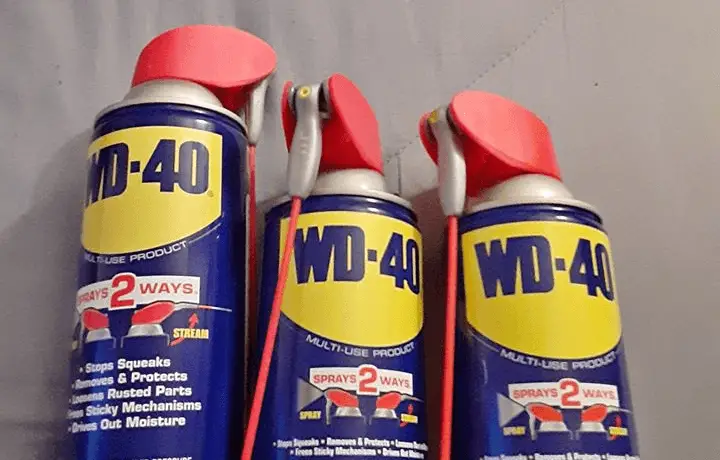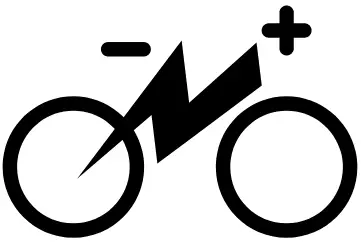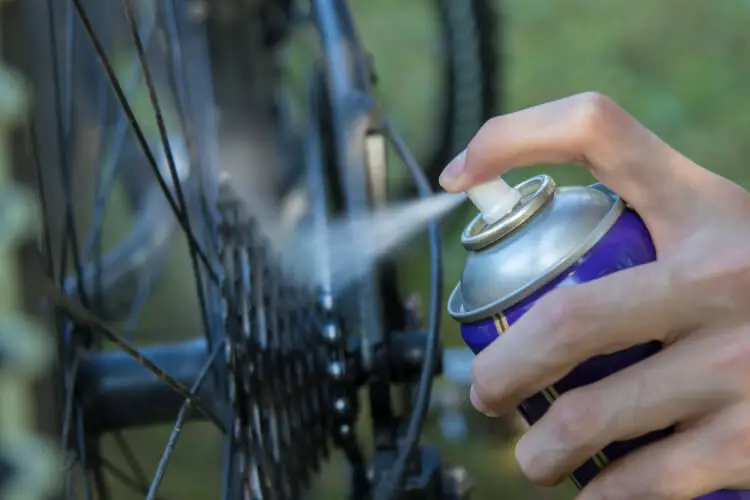The easily recognizable blue and yellow can has many uses. For many people, it’s the first thing they grab when there is a squeak, a sign of rust, or something to be loosened. There is usually a can in most people’s homes, but can you use WD-40 on your bike?
You need to use the right lubricant to make sure your bike is protected from rust and runs smoothly. We took a serious look into WD-40 to see if grabbing that convenient can in the garage might actually do your bike harm.
The Many Uses of WD-40

WD40 has so many uses that it almost belongs in its own category. While other similar products fall into areas like lubricants or degreasers, WD40 is best described as a multi-purpose product.
The different uses, all of which involve protecting and maintaining metal, span across a huge range of industries. The original WD-40 was created for rust protection and degreasing for the aerospace industry in the 1950s. Today, it’s just as likely to be used for fixing a squeaky hinge at home.
The WD stands for water displacement, which effectively means it gets rid of moisture. Removing moisture from an area is a great way to prevent rust. This protection is one of the reasons it’s used on cars and bikes. WD-40 not only protects, but can also remove grease and dirt. This solution has been used as a degreaser on cars, bikes, tools, and anywhere where grease gathers.
WD-40 also helps loosen parts that are trapped together. If a bolt is stuck in a nut, or something has been overtightened, it can penetrate gaps and help loosen whatever is stuck.
There is often a debate on whether WD-40 is a lubricant. The company states that it is a ‘unique, special blend of lubricants’ and it is used widely to remove squeaks and reduce friction between surfaces. The debate is usually based on WD-40 not being a long-term lubricant solution. It is true that it has different qualities than a typical lubricant. These are usually designed solely for long-term lubrication whereas WD40 isn’t.
So, the reason there is a tin in most garages? It’s because it has so many uses. While it might not be the best solution for some of the things it’s used for, its versatility makes it unique. If you’re wondering what the 40 stands for, it’s the number of times they tried different solutions before coming up with WD-40.
How to use WD-40 on Your Bike
Many riders swear by WD-40, while others will swear at you for using it. In its favor, it is a one-can solution that covers both degreasing and lubricant well. However, there are riders who prefer a specific individual product for both of these purposes. The truth lies somewhere in between.
WD-40 is a very effective degreaser, and as a lubricant, it’s at its best if replaced regularly. This video shows how it works successfully as a solution for degreasing and lubricating.
It’s worth pointing out that this works well for someone who is riding regularly. If your bike is left for long periods of time, between rides you might find that you need a more substantial lubricant for parts such as the chain.
Cleaning and Degreasing

For many riders, WD-40 works well for some uses but not all. When you’re cleaning your bike, the first thing to work on is removing the dirt. Spraying WD-40 onto the chain and cassette will allow the degreasing to start. Then spin the pedals so the liquid goes through the cogs and chain and then wash your bike with soapy water.
It’s worth pointing out that silicon and rubber will degrade with oil-based cleaners so you should avoid any parts made of these. Also, avoid using it on brakes and brake calipers. The performance will be impaired by having an oil-based substance at this stage. Brake pads that get oil on them can be a serious issue and you’re better off using brake cleaner or warm water. If you choose a brake cleaning solution you should make sure it’s bike-specific as some car brake cleaners can contain oil.
Lubricating Your Bike
Once you have washed and dried the bike thoroughly you can use the WD-40 as a lubricant.
You can reapply to your clean chain and cassette, whilst spinning the wheels again. You can also add a small squirt to the derailleur and brake calipers. You will be using it as a lubricant rather than washing with it, however, you still should avoid the brakes and brake pads.
Using WD-40 as a degreaser and lubricant has its benefits as it saves money, effort, and time. There can also be issues with degreasers and lubricants not being compatible with each other, but using WD-40 for both stages is effective. There are thicker, longer-lasting lubricants and specific degreasers for bikes. But if you’re looking for a convenient solution WD-40 can do it all and also help you out with a squeaky hinge and a stuck bolt.
WD-40 Bike
WD-40 understood that cyclists were a large part of their customer base. They also understood that there was some resistance from some in the community. They felt the ‘multi purpose‘ worked against them and developed a bike-specific range.
The range includes specific bike-related products including a degreaser, an all-condition lubricant, wet and dry lubricants, and an all-condition bike wash. WD-40 has explained that the formulas are newly developed for bikes, and we find that they are.
The degreaser is a very good product and it’s an interesting step. By creating bike-specific products, they can be better compared to other bike products. The lubricants also have positive reviews, however, there are a number of reports about the nozzle and cap causing quite a wide spillage which isn’t ideal.
WD-40 Alternatives
So, if WD-40 doesn’t fit the bill for everyone, what other products are on the market as alternatives?
For a product that specifically decreases, it’s hard to look past Park Tools Chainbrite. Park Tools are genuinely well respected and renowned for offering great quality products. Chainbrite is biodegradable and plant-based and is excellent for a heavy clean.
Simple Green also offers a cleaner & degreaser that has a quickly growing fan base. The brand is becoming increasingly popular due to its environmental considerations as well as the quality of its products. The cleaner doesn’t disappoint and is an excellent alternative to WD-40. You can see a short video showing its benefits below:
For lubricants, Dry Chain Lube is a popular choice. It goes on as a grease but sets which helps protect the bike parts and makes it less likely to come off. Finish Line’s Dry Teflon Chain Lube is hugely popular and Teflon helps as a weather seal. This is another biodegradable product. It’s worth noting that anything biodegradable needs replacing quite regularly as by its nature it degrades.
Each of these works as either a degreaser or a lubricant. But if you want something that works well for both and might have a few other hundred uses around the house, it’s back to the garage to grab your WD-40 again.

